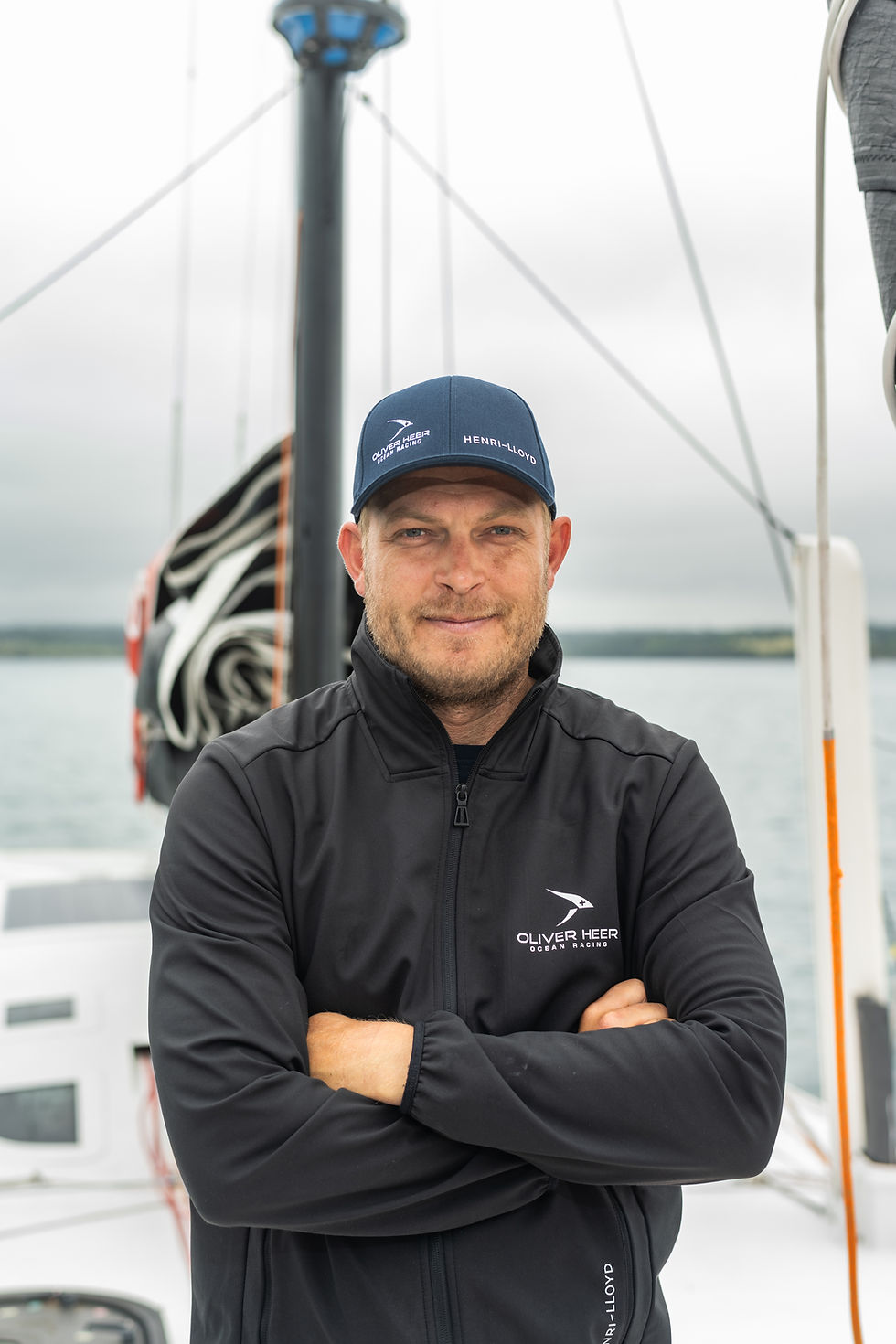Science and Sailing at the 2024 Vendée Globe
- Communications
- Sep 8, 2022
- 4 min read

The Swiss Polar Institute is collaborating with offshore sailing team Oliver Heer Ocean Racing to collect environmental data during their 2024 Vendée Globe Campaign.

Oliver Heer Ocean Racing and the Swiss Polar Institute are pleased to announce the start of a three-year collaboration to place world-leading Swiss science on Oliver Heer’s racing sailing yacht IMOCA – Gitana 80 and carry out a data collection campaign during both the training and racing phases of the Vendée Globe challenge between 2023 and 2025.
The Swiss Polar Institute was approached by Swiss skipper Oliver Heer a former member of the Alex Thomson sailing team, who is setting up his own campaign to take part in the Vendée Globe 2024 race. Oliver Heer’s campaign is centered around the topic of climate change and will be working towards climate neutrality thanks to a partnership with ClimatePartner.
Collaboration with scientists and collection of environmental data is central to Oliver Heer’s responsibility in his role both as a campaign leader and skipper, supporting his vision, #RaceForChange. Following Oliver Heer’s initial contact, the Swiss Polar Institute brought together a group of scientific experts from ETH Zurich, University of Bern and University of Lausanne to design an innovative science campaign.
The Swiss Polar Institute and Oliver Heer are thrilled that internationally recognised experts on the physics and biogeochemistry of the Southern Ocean responded with great enthusiasm, seeing the opportunity to connect “extreme sailing” in an “extreme environment” with their research on “marine extreme events”. Of particular interest is the opportunity to use the campaign to make observations in regions that are very hard to get to. The data analysis will also be carried out in world-leading laboratories which will guarantee impact and visibility for the data acquisition campaign.
“We are delighted to connect internationally recognised experts on the physics and biogeochemistry of the Southern Ocean and to have the opportunity to collect unique environmental data in remote and data-sparse regions during Oliver’s sailing campaign. We are convinced of the added-value of science performed on small and agile platforms, such as sailing yachts.”, says Danièle Rod, Executive Director at the Swiss Polar Institute.

A unique Swiss scientific campaign
The Vendée Globe Race and campaign represent a unique opportunity for science to collect data in understudied, yet globally critical ocean regions. As a major sink of human made CO2 emissions and excess heat, the Southern Ocean represents one of the key modulators of the global climate system. Without the Southern Ocean CO2 sink, atmospheric CO2 would have crossed 500 particles per million (ppm) already, and global warming would have been much larger than what Earth has experienced already. Yet, in situ observations are too sparse to confidently determine this sink and its variations in time. These observations are also too sparse to robustly feed and constrain the climate models used to predict the future evolution of the Southern Ocean in the face of anthropogenic climate change.
“The extreme environment of the Southern Ocean still holds many mysteries – especially with regard to its role as a sink for atmospheric CO2. With these novel measurements, we will be able to unlock some of these.”
Prof. Nicolas Gruber, ETH Zurich
A second major thread of the campaign will be the study of “marine extreme events”. In particular, scientists will use the collected data to better map and understand “marine extreme events” in physical, biogeochemical and biological properties, such as marine heatwaves, ocean acidity and low ocean productivity extremes. Such extreme events can have devastating impacts on marine ecosystems and socio-economic systems and may affect marine life and the ability of the ocean to take up further CO2 from the atmosphere.
“The new high frequency measurements provide us the unique opportunity to study compound marine heatwaves and ocean acidity extremes events in almost real time and in largely under sampled regions, such as the Southern Ocean.”
Prof. Thomas Frölicher, University of Bern
Similar oceanographic measurements will be carried out by other competing sailing yachts, offering inter-comparability and quality control opportunities. However, the uniqueness of the Swiss science campaign will include its tight integration of the newly observed properties into ongoing research projects conducted by the participating research groups.

This campaign will also strengthen the Swiss-wide collaboration by internationally recognised research groups at ETH Zurich, the University of Bern and the University of Lausanne. All groups are fully committed to open science practises. All data will be made available through open access data repositories and the resulting research will be published in open access journals.
Practical elements
In order to carry out the measurements, an OceanPack RACE® underway system manufactured by the German company subCtech, has been installed on board the IMOCA yacht Gitana 80, during the first week of September.

This instrument has been specifically developed to be installed on racing yachts and is both lightweight and sturdy as well as able to deal with the pressure and bubbles generated at high-speed. The collaboration launch will take place at the end of October 2022, at the start of the Route du Rhum race, which will be the first opportunity to use the instrumentation in a race set-up.
Measurements will then be carried out throughout training and further qualifying races in 2023 and 2024 and during the Vendée Globe race in 2024-2025. Data will be measured in a nearly continuous manner while the boat is underway.
Strengthening Swiss Polar Science
Created to provide services to and promote synergies within the polar community in Switzerland, the Swiss Polar Institute conducts science in and around polar and high-altitude regions that are critical to understanding the evolution of the Earth’s climate.










Comments